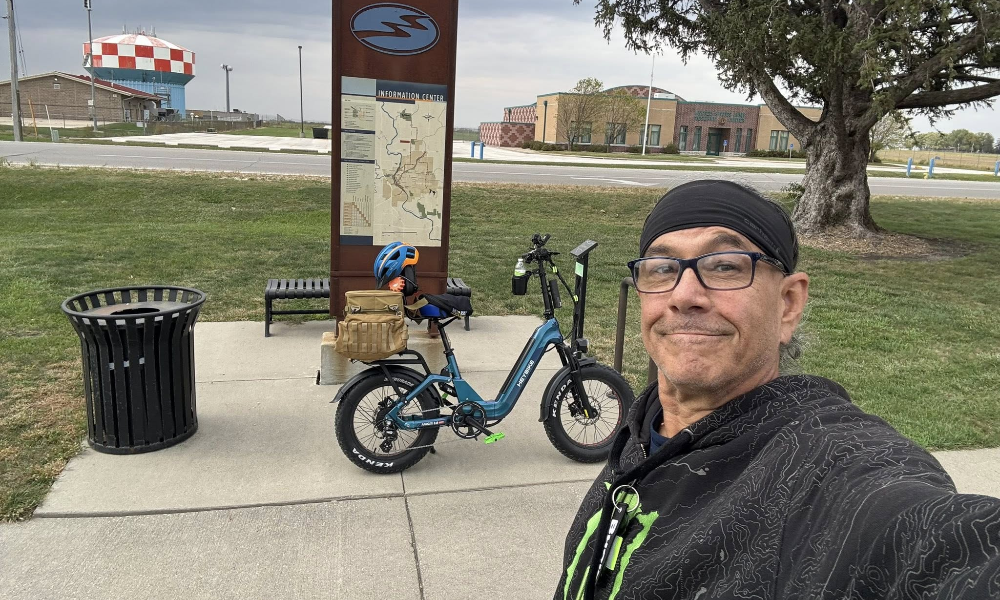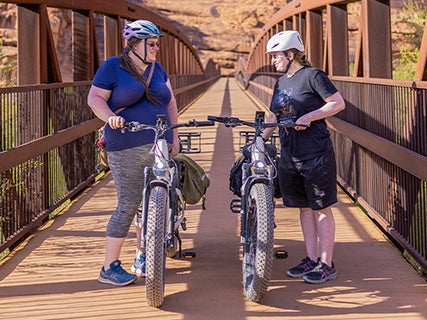One of the most crucial characteristics to compare across e-bike models is range. It might be challenging to estimate the range of an e-bike because it can vary depending on the factors and across different e-bike batteries and motors.
Giving a precise estimate of the miles a car can travel is challenging, and estimating the range of an electric bike is equally challenging. This article will define the e-bike range, how to increase it, and explain why it is crucial to consider when selecting an e-bike.

How Do I Know The Range Of My E-Bike Battery?
How can you plan for e-bike excursions if you do not know your bike range? The numerous parameters can make figuring out an e-bike's exact range difficult. You start by examining the battery capacity of your electric bike to estimate an approximate range.
The description and manual of an e-bike both mention the battery capacity. An electric bike's battery capacity is in Watt-hours (Wh). An e-bike battery may occasionally have volts (V) and amp-hours (Ah). Many manufacturers feel reluctant to provide an exact range for their e-bikes because environmental conditions impact the results.
What Is The Difference Between 48V And 52V Volt Batteries?
More Range
52V batteries have a bigger battery capacity (rated in Watt-hours) and have a higher range than 48V batteries with the same rated Ah.
More Energy
52V batteries can give a motor more energy when needs. Compared to e-bike battery 48V, 52V batteries offer a higher voltage range in which the motor can function. 48V battery is enough if you only want to ride in cities and commute; you do not need more energy for off-roading or climbing severe hills.
More Efficient
Compared to an e-bike battery 48V, and 52V batteries can enable your motor to run at a lower current (amp) consumption when operating under the same conditions. It can lessen the generated heat inside the motor, preventing overheating and early failure.
More Versatile
e-bike battery 52V functions better in cold conditions than a 48V battery, as in the winter when it is cold or snowing.
Factors Affecting The Range Of The Electric Bike
- The total load weight, including the rider and equipment
- Your typical biking pace
- Your position while riding
- Tire pressure and type for the bike
- Hill grade and terrain
- The wind direction
- Road conditions and humps
- The climate
- Your fitness and pedaling ability
- Battery type
- E-bike battery Size
- Battery age
How Far Will A 750-Watt Motor Electric Bike Go?
A normal-weight e-bike can travel 32 km/h on flat ground with no wind at a maximum speed of 750 watts. The motor's energy is a main consideration. The rider's weight is the second most crucial component. A heavier rider will require more energy to travel at the same speed as a lighter rider. The range you can obtain from your e-bike depends on various factors, including the terrain you are riding on, how much weight you are carrying, and your physical fitness.
How Far Will A 500-Watt Motor Electric Bike Go?
Electric bikes typically have a 20 to 100 miles range, though actual mileage will vary based on many factors. A 500w e-bike is an excellent option for individuals seeking an electric bike with a high range because it can ride much farther than the typical electric bike.
FURTHER READING: 500w vs 750w Ebike: Which One is Better for You?
How To Increase My Electric Bike's Range?
Every adventure enthusiast wants to ride their e-bike farther, faster, and for longer, so it makes sense. E-bikes may unquestionably give you these advantages over conventional bikes.
Fortunately, you can do a few easy tips to extend the range of your e-bike. Your bike range might be significantly affected by making a small change to your riding style.
The first thing you do after beginning a break is to pedal. Here, it takes a lot of energy to start, and if you share that load with the engine, your battery will be under less stress. The best moment to stop pedaling for a while to rest is when you are cruising.
Hard acceleration is another situation where you can unnecessarily use too much battery power; instead, start up slowly and increase your speed to cruising speed to achieve better battery mileage.
Maintain your bike maintenance schedule. Make sure the brakes are adjusted so they are not rubbing. Be sure your tires are inflated appropriately; going to the higher end of the range will give you better rolling resistance and allow you to cruise more easily.
If your bike has a read-outs display screen, pay attention to it. Knowing when you are drawing the most energy from your battery at any particular time might be valuable information.
Summing
Every e-bike rider needs to know how their bike's range operates. Avoiding future flat batteries by being aware of your bike's battery's limitations will help. It takes time to learn how to use your bike to get the most out of it, so keep track of how changing your behavior impacts your range per charge. You may use the batteries in your bike to go on longer and more enjoyable rides in the future by practicing effective energy saving.



Share:
A Deep Dive into Electric Bike Battery Types
All Ebikes Allowed on the Sidewalk in US?